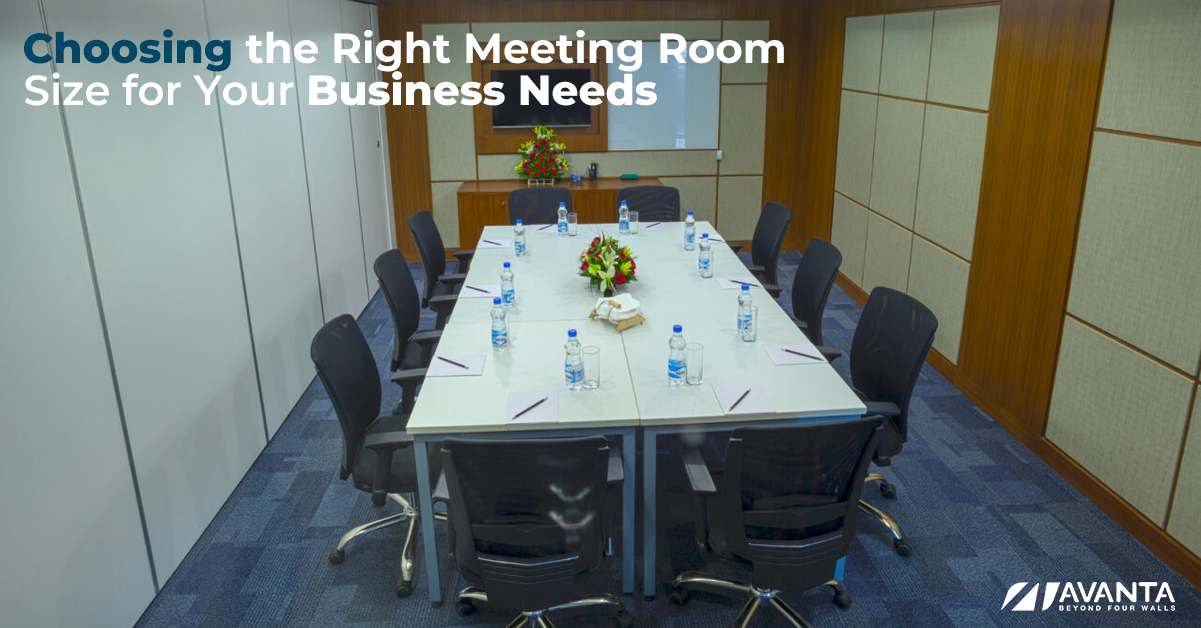Choosing the Right Meeting Room Size for Your Business Needs

The significance of physical meetings in the business world does not diminish with this time of digitisation. The size of meeting room setting of the interactions, no matter if it is a brainstorming session or a strategic planning meeting, can have an enormous impact on its success. The size of the meeting rooms is considered to be one of the most important factors determining an optimal meeting environment. This article goes into the details of how to choose a meeting room size that is suitable for your business requirements and gives you insights in such a way that everyone views meetings not only as formal gatherings but actual productive moments.
What is the Significance of Meeting Room Size?
The size of meeting rooms can affect many aspects of a meeting, from how comfortable participants feel to the level of communication effectiveness. If a room is too small, it can create an uncomfortable and enclosed environment that may lead to the restriction of ideas. On the other hand, a room that is too large may cause interactions to seem detached and disconnected. The secret lies in striking a balance, that the room size suits the nature and purpose of your meeting.
Factors to Consider While Choosing the Right Meeting Room Size
When we talk about the size of the meeting rooms, many different factors are taken into account:
- Number of Participants: The main issue is the number of persons participating in the meeting. It is generally recommended that about 25-30 square feet per person be provided in a standard conference style of seating to provide comfortable space for movement.
- Type of Meeting: The type of meeting determines the room size requirement. A conference room setup, which is usually used for organized meetings, may require more space per individual than a training room arrangement in which participants are seated either facing each other or the speaker.
- Furniture and Equipment: The furnishing of a room may reduce the available space that can be used. It is crucial to consider these factors when calculating the ideal room size.
- Room Layout: The arrangement of the room should support the purpose of the meeting. For example, a U-shaped layout may be perfect for workshops aimed at fostering participation while a theater setup works well with large presentations in the training room.
- Acoustics and Lighting: Sufficient space allows for better acoustics, which minimizes echoes and noise disturbances. In the same manner, the suitable room size will improve lighting effectiveness whereby all participants are able to view presentations and speakers with ease.
The Role of Flexibility
In the current competitive business environment, flexibility is not an option; it’s a necessity. The flexibility provided by the possibility of changing a meeting room configuration implies that one space can simultaneously be used for multiple purposes, ranging from conventional conference room gatherings to dynamic training workshops. This flexibility is especially important in a world where the nature of work and collaborations are changing every day. For instance, a startup may require a coworking space that promotes innovative thinking and group involvement one day and an official pitch setting the next. Organizations may select a space that is highly flexible, which guarantees alignment between their physical setting and operational requirements.
Technology Integration
The use of technology in meeting rooms goes beyond mere convenience; it is a transformative element that can boost the meeting experience to new heights. In a time when digital collaboration tools and virtual participation are ubiquitous, the lack of technology infrastructure in a meeting facility can be an enormous obstacle. The backbone of digital interaction is high speed internet, which allows video conferences to run flawlessly and ensures that on-site or remote participants communicate effectively without lag or disruption. High-end audio-visual technology like HD projectors, smart boards, and surround sound systems can transform a plain presentation to an interactive experience. Technology is not an afterthought but a vital tool that enables every meeting to be more fun, welcoming, and effective.
Conclusion
In summary, the choice of meeting room size is an important decision that should determine whether your business meetings will be successful or not. Based on the number of attendees, format of the meeting, and adaptability to technology change, businesses can make sure that their meetings are efficient in achieving desired outcomes. With an extensive range of high-quality meeting rooms, Avanta stands out as a front runner in providing spaces that are functional, technologically advanced and comfortable, making it the go-to destination for meeting room needs. Whether you are holding a small team meeting or large scale corporate training session, Avanta’s professional office spaces provide the best environment for your business to succeed.









